Claw Machine Types & Tips: How to Win and Spot Rigged Machines
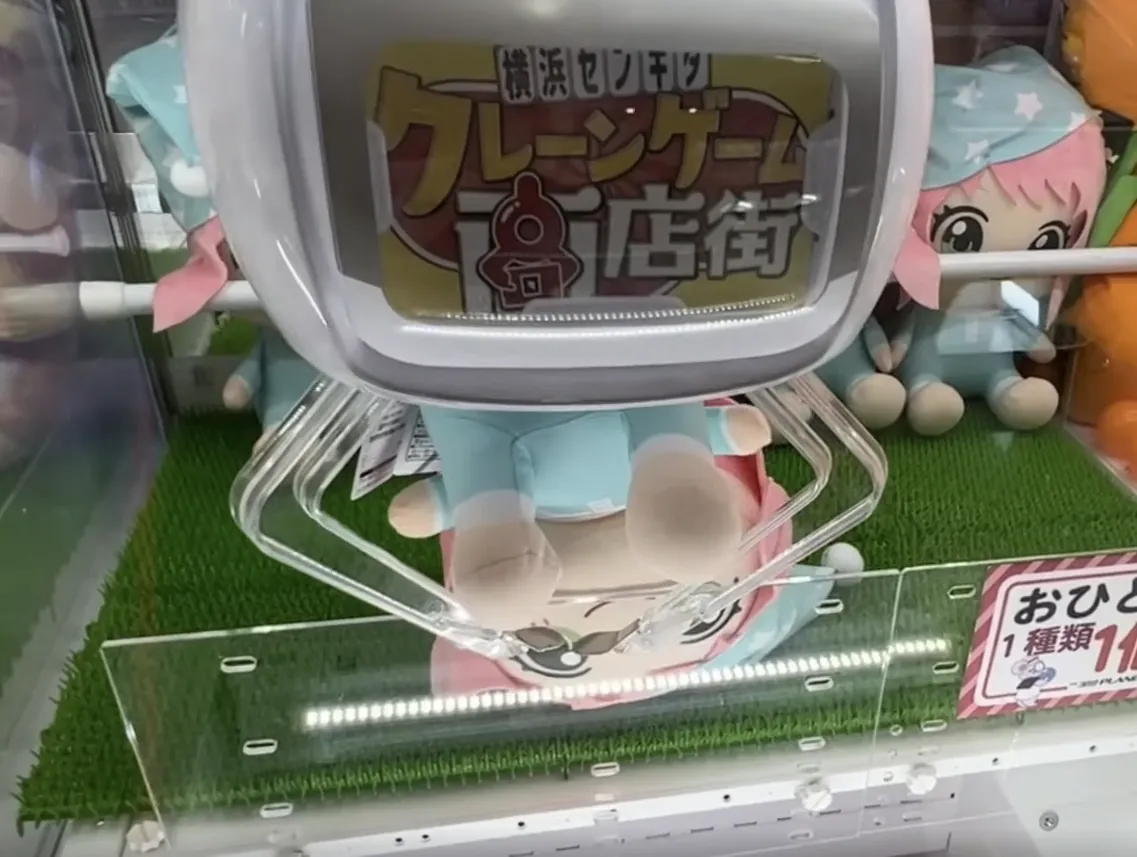
In our previous guide "The Ultimate Guide to Online Claw Machines and Gachapon Platforms" we explored the basics of claw crane games and online gachapon fun. Now, in this follow-up, we'll dive deeper into the different types of claw machines and provide actionable tips for improving your win rate. You'll learn how to optimize your plays by reading machine setups and timing your moves, and how to detect rigged "payout" machines that might be stealing your chances. Whether you're a casual player or a strategic collector, this comprehensive guide will help you master claw machines - both in arcades and on online platforms - with a smart, practical approach. Let's get started!
Understanding Different Types of Claw Machines
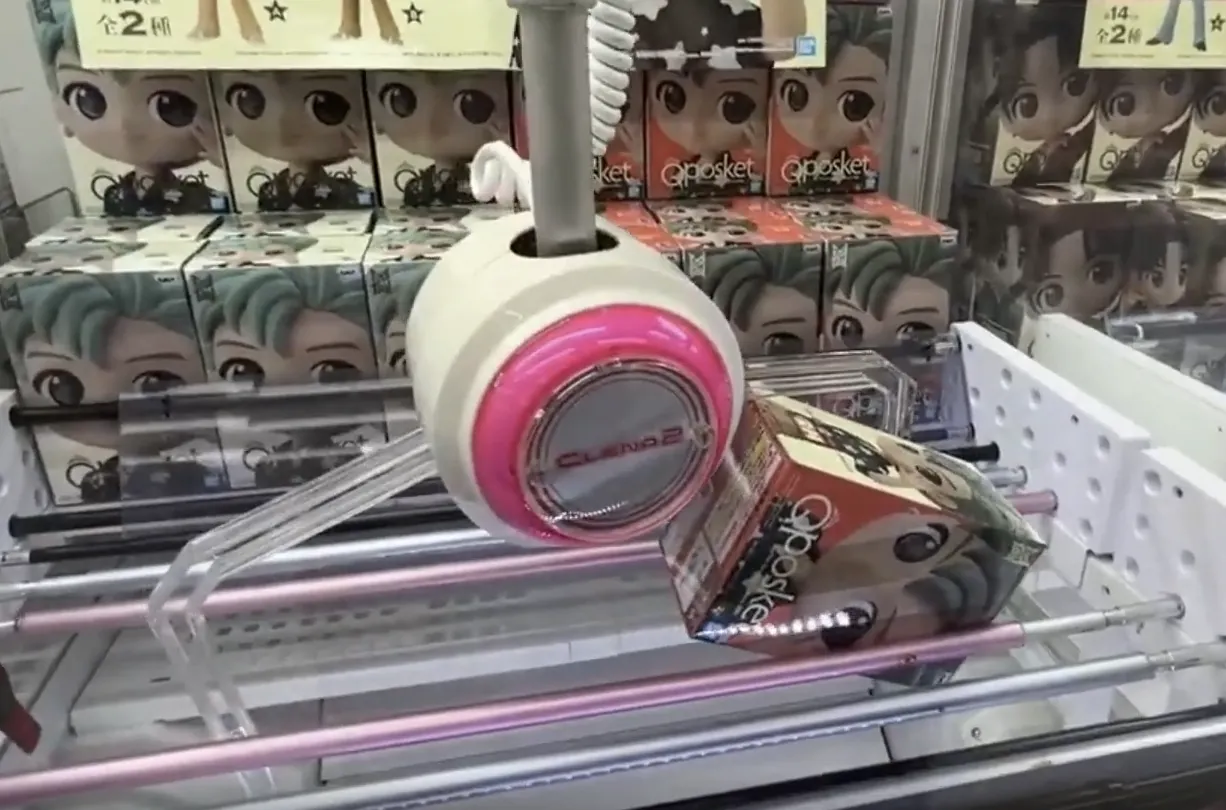
Classic claw machines typically use a three-pronged claw to grab plush toys (as shown above), but many variations exist - from two-pronged "UFO catchers" to magnet-based cranes. Knowing the machine type you're playing can help you adjust your strategy for the best chance of winning.
Not all claw machines are built the same. The design of the claw and the mechanism can vary, and each type has typical prize types it's best suited for. Below is a comparison of common claw machine types - including their usual contents, strengths, and weaknesses:
| Machine Type | Typical Prizes | Pros | Cons |
|---|---|---|---|
| Three-Pronged Claw (Classic Crane) | Plush toys, candies, small electronics - very versatile | - Firm grip on prizes from multiple sides, reducing chance of drop - Comes in various sizes to fit different prize sizes - Often has rubberized claw tips for better hold on items | - Commonly uses variable strength (payout) settings, so it may only grip tightly on certain tries - Players can experience "perfect" grabs that still slip out due to programmed weak strength cycles |
| Two-Pronged Claw (UFO Catcher Style) | Figurine boxes, large plushies, prizes resting on bars or ledges | - Simple pincer motion (no rotation), making it easier to line up precisely on target - Often consistent strength every play (many have no payout-rate trickery), making these machines more skill-based - Great for nudging or tipping prizes (e.g. pushing a box off a platform) rather than lifting | - Only two contact points means big gaps where a prize can slip out easily - Arm power tends to be weaker - heavy or large items might barely move when grabbed - Requires more strategy (e.g. multiple nudges) to win since direct grabs often fail |
| Magnetic Claw (Magnet Crane) | Items with metal tags or parts: mini gadgets, keychains, jewelry, or high-value prizes attached to a metal plate | - When the magnet connects, it can hold a prize very securely (a solid lock-on grip) - Adds novelty and can handle prizes that claws might not grip (e.g. a metal-cased prize) - Often used for special prizes (can be exciting to play for unique items) | - Prizes must have a metal component, limiting selection - Magnet strength is often regulated; operators can adjust power or payout rate just like claw tension (Many magnet machines are notoriously difficult to win by design) - If the item isn't perfectly flat against the magnet or is heavy, it will slip off before reaching the chute |
| UFO Catcher (Japanese Arcade Claw) | Plushies, anime figures, candies, and more - often exclusive or limited-edition items in Japan | - Typically a two-prong claw setup designed for skillful play rather than luck. No random strength drops - you get the same claw power each try - Encourages strategic wins: e.g. nudging a prize gradually until it falls, which can be very satisfying - Machines are well-maintained in Japanese arcades; staff sometimes assist if you're close to winning (fairer play experience) | - Usually not meant to be won in one go - expect to invest multiple plays to move the prize into a winning position - Two-prong design with precise alignment needed, so there's little room for error (can be frustrating for newcomers) - If you're unfamiliar with the technique (e.g. tipping a box between two bars), it has a learning curve |
Explanation: The 3-prong claw (the classic crane machine found in most arcades) is great for general purpose prizes and tends to cradle items better with its triangular grip - but operators often take advantage of its design by tweaking the claw strength between plays. The 2-prong claw, commonly seen in UFO catcher machines, has larger gaps in its grasp, which makes it harder to outright grab things. However, the benefit is that many 2-prong machines run at full strength every time (no hidden weak cycles), so a skilled player can consistently execute a strategy to win. These are the machines you'll often find in Japan's arcades, where the challenge is to push or flip the prize off a ledge or through barriers rather than lift it. Magnetic claw machines are a different breed - instead of gripping, you're aiming to connect a magnet to a metal piece on the prize. They can be fun but recognize that magnet strength can be secretly "rigged" just like claw strength can. Knowing which machine type you're up against will help you choose the right approach - whether it's aiming directly for a center grab on a plush, or carefully hooking the corner of a box to inch it closer to the drop.
Tips and Strategies for Winning Claw Machines
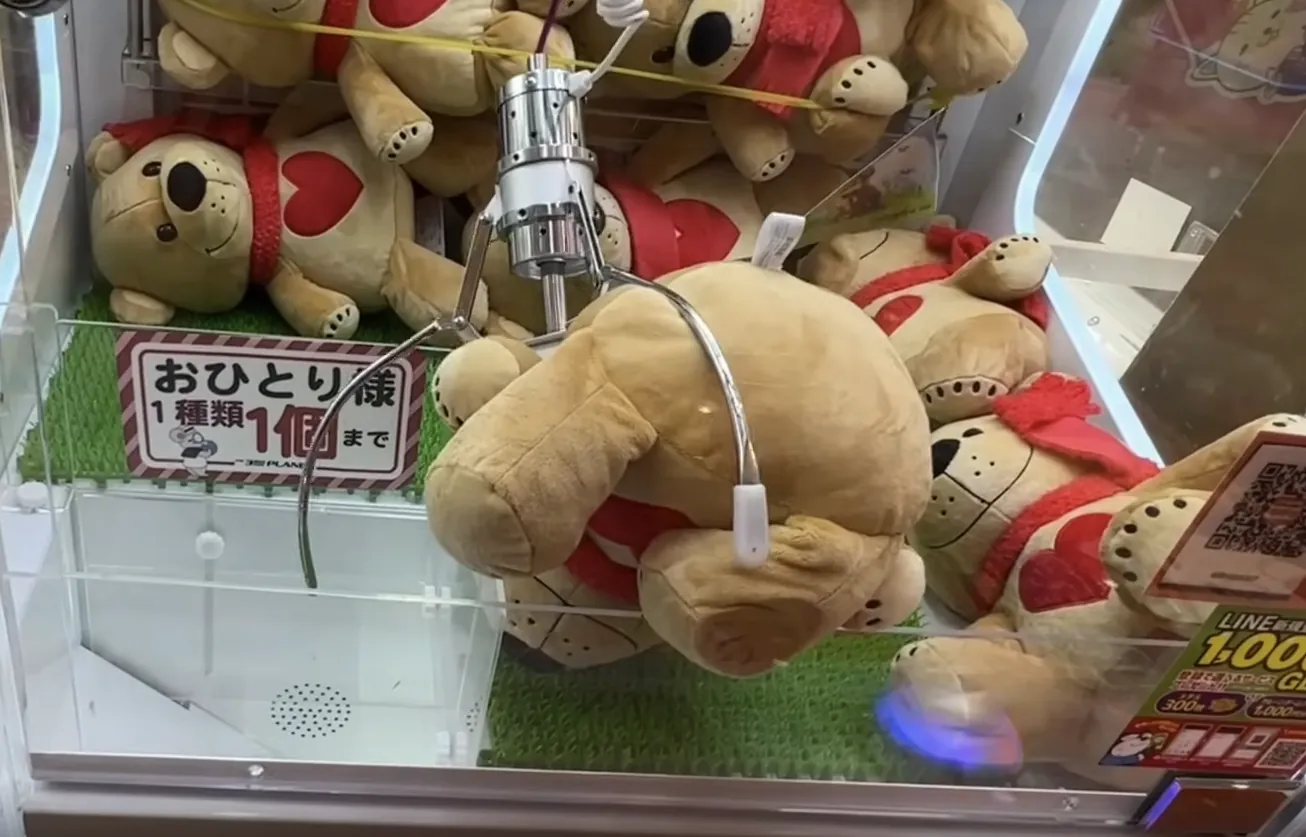
Understanding claw machine types is step one; step two is optimizing your play strategy. Here are some proven tips and strategies to help you win more claw machine prizes with fewer plays:
-
Study the setup before playing: Take a moment to watch the machine's behavior and layout. Observe how the claw moves (does it rotate? swing?) and how tightly packed the prizes are. Noting the claw's strength and the prize positions can save you from wasteful attempts. In fact, seasoned players will often observe a machine first - how previous players fare and how the claw grips - to gauge if it's winnable. If the prizes are arranged loosely and the claw seems to have decent strength, your odds are much better.
-
Choose your target wisely: Rather than going for the coolest-looking prize buried in a corner, pick a prize that's positioned advantageously. Ideally, find one near the chute or on top of the pile, not wedged under other items. A partially exposed plush or a box teetering on the edge of a ledge is a great candidate. Prizes wedged tightly or in awkward corners will be much harder to grab or move - some machines even intentionally position prizes in nearly unreachable ways (a sign to maybe try a different machine). Going for an easy grab first can also clear the way for other prizes in later tries.
-
Align the claw precisely: This sounds obvious, but it's where most people slip up. Use the two-angle approach: position the claw over your target from the front, then check the side alignment (many machines have a mirror or you can step to the side briefly). The goal is to have the claw directly above the prize's center of gravity. For a plush, that might be around the body; for a rectangular box, you might aim the claw to hook one end of the box. Small errors in alignment can be the difference between lifting a prize and just nudging it. Take your time within the allowed move period to line up carefully, and remember that some claws drift a bit after you stop - learn your machine's quirks.
-
Master the timing (and any special controls): Some claw machines offer a second button press or a timing element that can be exploited. For example, many modern machines let you press the button again to make the claw close early or stop descending. This is incredibly useful - you can time the closure to catch a tag or part of the prize precisely. Expert players often use this "double-tap" technique to, say, stop the claw right as it slips through a plush's loop or when it's in the perfect spot to push a prize. If your machine has this feature, practice the timing: hit the button just as the claw's prongs are in the desired position around the prize. Additionally, watch how the claw grips - does it close slowly or quickly? Some machines require you to hold the button for the claw to maintain grip strength (consult any on-screen instructions, as every model is a bit different).
-
Use the right strategy for the right machine: If you're playing a two-prong UFO catcher or a machine with bars/ledges, don't expect to win by center-grabbing the prize - the game may be designed for a nudging strategy. For instance, if a figurine box is balancing between two horizontal bars, use one prong of the claw to lift or push one side of the box, gradually inching it towards tipping over. Similarly, for a plush that's too heavy to lift outright with a weak claw, try to drag it: aim the claw to one side of the plush so that when it closes, it clamps one part and pulls the toy closer to the chute. Sometimes two or three well-placed drags will get a plush into a better position or even tumble it in. Remember, many arcade machines in Japan are explicitly set up to require multiple steps to win a prize - it's part of the challenge. Embrace that process rather than expecting a one-shot win every time.
-
Know when to quit (and when to persist): Even the best strategy won't overcome a machine that's set not to let you win (see the rigged machine signs in the next section). If you've executed a few perfect grabs and the prize still slips out at the same point, the machine could be in a payout cycle (meaning it won't give a win until a certain number of plays). In such cases, it might be wise to walk away and find a friendlier machine. On the other hand, if you see that you're making progress - e.g. the prize moved significantly closer to the chute after a couple tries - it can pay to stick with it for a few more plays to finish the job. Part of optimizing your plays is reading that feedback: are you getting closer to a win, or just throwing money at an unwinnable setup? A smart player always evaluates after each try and decides the next move (or whether there should even be a next move).
-
Practice on free or virtual crane games: If you're serious about improving, consider practicing on digital platforms first, where the cost of failure is zero. Several apps and online games simulate real claw machines. For example, the Taito Online Crane app offers free practice machines that mimic the physics of real claws. Practicing in these virtual environments can help you get a feel for how claws swing, how much drift to expect, and how different claw types grip - all without wasting money. By the time you step up to a real machine, you'll be more confident in your control. (On a related note, if you love the thrill of prize games but not the cost, you should check out Tincha.se, a free-to-play online gachapon-style game - more on that at the end of this article!)
By applying these strategies, you'll be playing smarter - not just harder. Claw machines will always have some luck involved, but by analyzing the setup, timing your actions, and leveraging every feature available, you can minimize the number of plays needed to snag that prize. Many players are amazed how these adjustments turn a "impossible" machine into a beatable challenge.
How to Spot Rigged or 'Payout' Machines
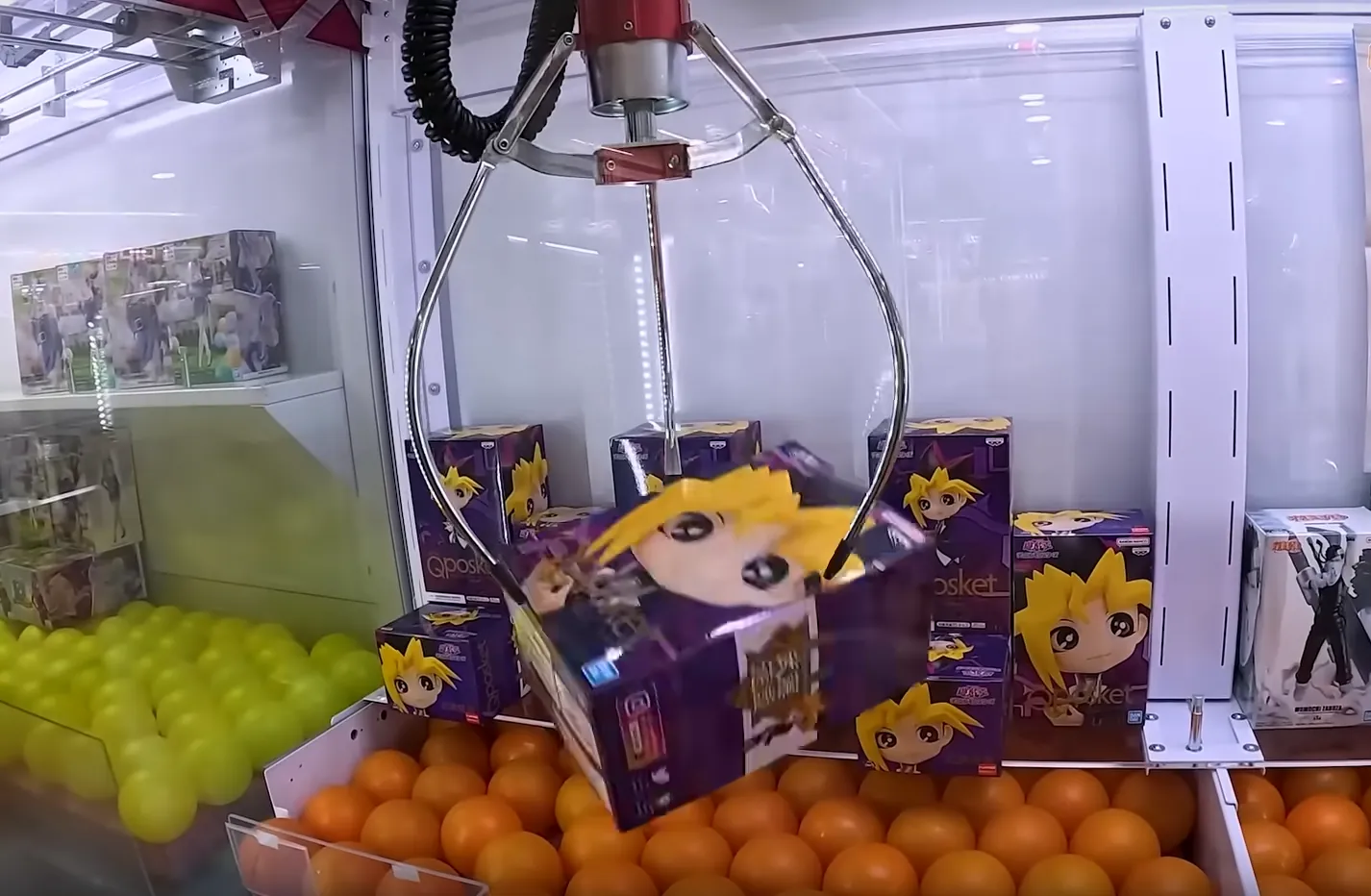
Even with perfect technique, you won't win from a machine that's designed to thwart you. Unfortunately, many claw machines (especially those with expensive prizes) are rigged via payout settings - meaning the machine's owner has programmed it to only allow a win after X amount of money is spent or X number of plays have occurred. In between those payout moments, the claw will intentionally lack the strength to deliver a prize. As a player, it's crucial to recognize the red flags of a rigged machine before you waste your time and money. Here are some signs to watch out for:
-
Prizes are positioned impossibly: Take a close look at how prizes are placed in the machine. Are they wedged tightly under others or stuffed into a corner where the claw can't grab them? If the best-looking prizes are deliberately tucked in spots the claw can't reach (for example, a plush wedged between two walls, or a heavy item buried under lighter ones), the operator might be setting players up to fail. A fair machine gives you at least a chance to snag a prize; a rigged one often displays tempting loot that's nearly ungrabbable by design. When you notice this, it may be best to skip that machine.
-
The claw grip strength is inconsistent or mostly weak: This is the classic hallmark of a payout machine. You might notice the claw grips strongly only rarely, and is feeble most of the time. For instance, the claw picks something up, but as it rises, you see it loosen its grip inexplicably and drop the prize halfway or just before the chute every time. Many manuals literally allow the owner to set the claw to only exert full strength on, say, one in 10 plays (or whatever ratio they want). If the claw drops the prize at the last moment repeatedly or never quite closes tightly enough, that's a big warning sign of rigging. A fair machine would have a consistent grip each play - so any obvious change in strength (one grab feels firm, the next is limp) is usually intentional.
-
Visible irregularities in claw behavior: Beyond just strength, watch for weird mechanical behavior that suggests the machine is tampered with. Does the claw sometimes not close all the way, or pause during the lift? Does it jerk or drop at a specific height every time? Rigged machines often have such "inconsistencies" - e.g. the claw might close at a random height or open slightly while moving, making it effectively impossible to win consistently. Another example is if the claw always swings away from the prize as it lifts (beyond normal swing); some machines are calibrated to shake the prize off. If the gameplay isn't smooth and repetitive (in a fair game, the claw behaves the same way each play), you could be dealing with a sneaky setup meant to ensure failure.
-
Unusually high-value prizes for a low cost: We all dream of winning that expensive game console or giant LEGO set from a $1 claw machine, but be realistic: if a prize seems too valuable to be true, the machine's difficulty is likely cranked to max. Operators offset valuable prizes by making the win rate abysmally low (to protect their profit). In many regions, laws even require prize values in claw machines to stay relatively low because otherwise it veers into gambling territory. So if you encounter a machine flaunting brand-new electronics, designer handbags, or other high-end goods, assume it's heavily rigged with a high payout threshold. (Often these machines have very strong claws but will only actually hold a prize on the once-in-a-blue-moon payout grab.) You might notice these machines often remain full of prizes; that's a clue that nobody wins often.
-
Patterns of wins and resets: Some payout machines operate on a cycle: e.g. they'll allow one win, then reset to a no-win mode for a certain number of plays or time. If you happen to see someone win a prize from a machine and then nothing else is won for hours after, that could be the design. A telltale sign is a machine that, say, had a recent win and then suddenly the claw becomes extremely weak again. Rigged machines can be programmed to have a "win limit" or cooldown. It's hard to detect unless you hang around, but in a busy arcade you might notice certain machines hardly ever pay out except once in a blue moon. If a machine has a crowd and still no one is winning, be wary.
-
The machine just feels off: Finally, trust your gut. Experienced players can often sense a rigged game: maybe the claw is just too light or the prize doesn't budge at all even with seemingly good grabs. If you get that feeling, don't fall for the sunk-cost fallacy ("I've already spent $5, maybe the next try..."). Recognizing a payout machine early is a win in itself - it means you won't dump more money into an unwinnable setup. Save your cash for a machine that at least gives you a fighting chance.
By keeping these signs in mind, you can avoid the frustration of essentially gambling on a no-win scenario. Remember that most modern claw machines have adjustable settings, and sadly, many locations do tune them for profit over fairness. The good news is that truly rigged machines tend to be obvious once you know what to look for. Practice observing those subtleties - soon you'll be able to walk into an arcade and pick out the best-value machines (the ones that are skill-based or at least have reasonable settings) and steer clear of the blatantly unfair ones. Your wallet will thank you!
The Online Claw Machine Experience (TokyoCatch, Toreba, etc.)
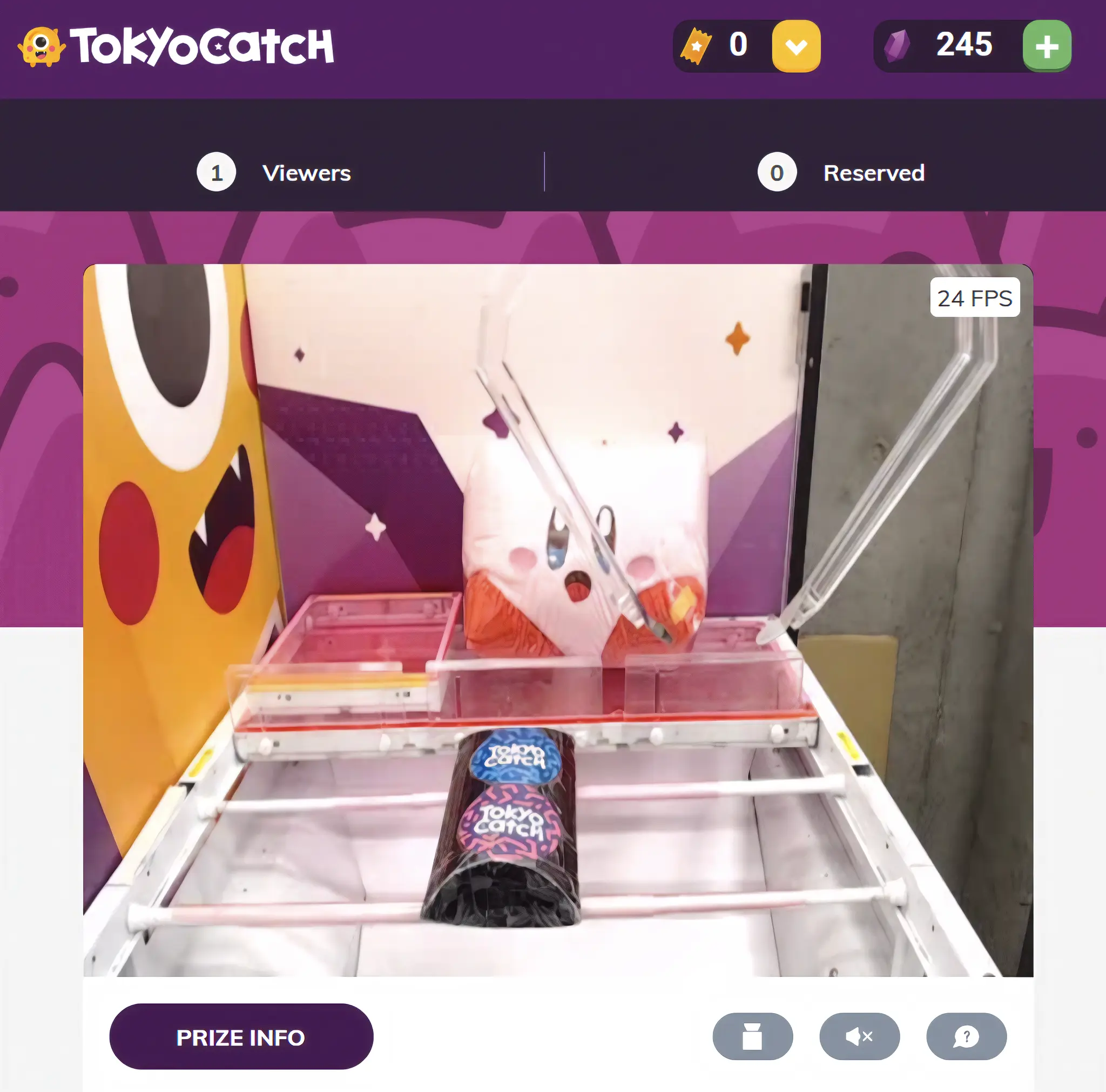
In recent years, claw machine enthusiasts have been able to enjoy their hobby beyond the arcade, thanks to online claw machine platforms. Services like TokyoCatch and Toreba let you remotely control real claw machines through a live video stream, effectively bringing the Japanese arcade to your phone or computer. If you haven't tried these yet, here's a brief overview of how they work and how faithfully they simulate real machines:
Online claw platforms typically have a warehouse or game center full of physical crane games. When you play via the app or website, you're actually moving a real claw in real time, watching via the camera feed. For example, "TokyoCatch's app offers authentic Japanese crane games, including UFO catchers, that you can play from the comfort of your own home". The selection often mirrors what you'd find in a Japan arcade - plush toys, anime figurines, candy boxes, etc. - and the machine types vary from the classic 3-prong cranes to two-prong UFO catchers and even ping-pong ball drop games. Toreba, one of the largest platforms, markets itself as "a 24/7 online crane game that lets you enjoy real claw machines from the comfort of your home...with prizes shipped to your doorstep". Indeed, when you win, the service will ship the prize to you (often for free or a nominal fee, depending on the platform's policies). For a comprehensive comparison of these platforms and others, see our detailed guide on online claw machine and gachapon platforms.
The gameplay on these platforms is very much like a real arcade: you usually get two motions (move horizontally, move vertically) and then the claw drops. There's a timer for your turn, since other players may be in a queue waiting. Importantly, the same physics apply - which means the same strategies and cautions we discussed. If a machine is set to payout mode, you'll experience the weak claws there too. (Some players note that certain online machines have visible payout behavior, just as in arcades.) However, many online crane apps will spotlight skill-based setups and even give you a few free plays as a new user to get you hooked. For instance, TokyoCatch and Toreba often give sign-up bonus plays and daily free tickets. This is a great way to have fun without initially spending real money, and to practice your techniques in a live environment. Keep in mind there can be a slight lag between your control input and the machine, so factor that in when timing your drop.
One cool aspect of the online platforms is the variety of machines. You might find creative setups that are rare in local arcades. Want to try that infamous ping-pong ball drop game or the bar drop with a figurine box? Chances are these apps have them. They also run limited-time prize promotions (exclusive plushies, seasonal items, etc.), which can be exciting for collectors. The downside, of course, is that it's easy to spend a lot because the apps make continuing as simple as tapping a button to buy more credits. Treat it like real arcades - set a budget. Some long-time players actually prefer online because they can play Japanese UFO catchers that have fixed strength claws (skill-based) rather than the highly rigged machines common in some local venues.
Ultimately, online claw machine games are a convenient way to get your crane fix, experience authentic UFO catchers, and even win real prizes from across the world. They bridge the gap for those who can't easily visit arcades. As one article notes, "apps like Sega Catcher Online and Taito's app let users control actual machines in Japan...with prizes shipped right to their doorstep", expanding access to these games beyond physical location. Just remember that from a strategy perspective, they should be played just like real machines - with patience, skill, and an eye out for which games are worth trying. If you enjoy the thrill of these but are wary of spending, there's also an alternative experience that scratches a similar itch in a more budget-friendly way, which we'll talk about next.
Try Tincha.se - A Free Online Gachapon Game with Claw Machine Thrills
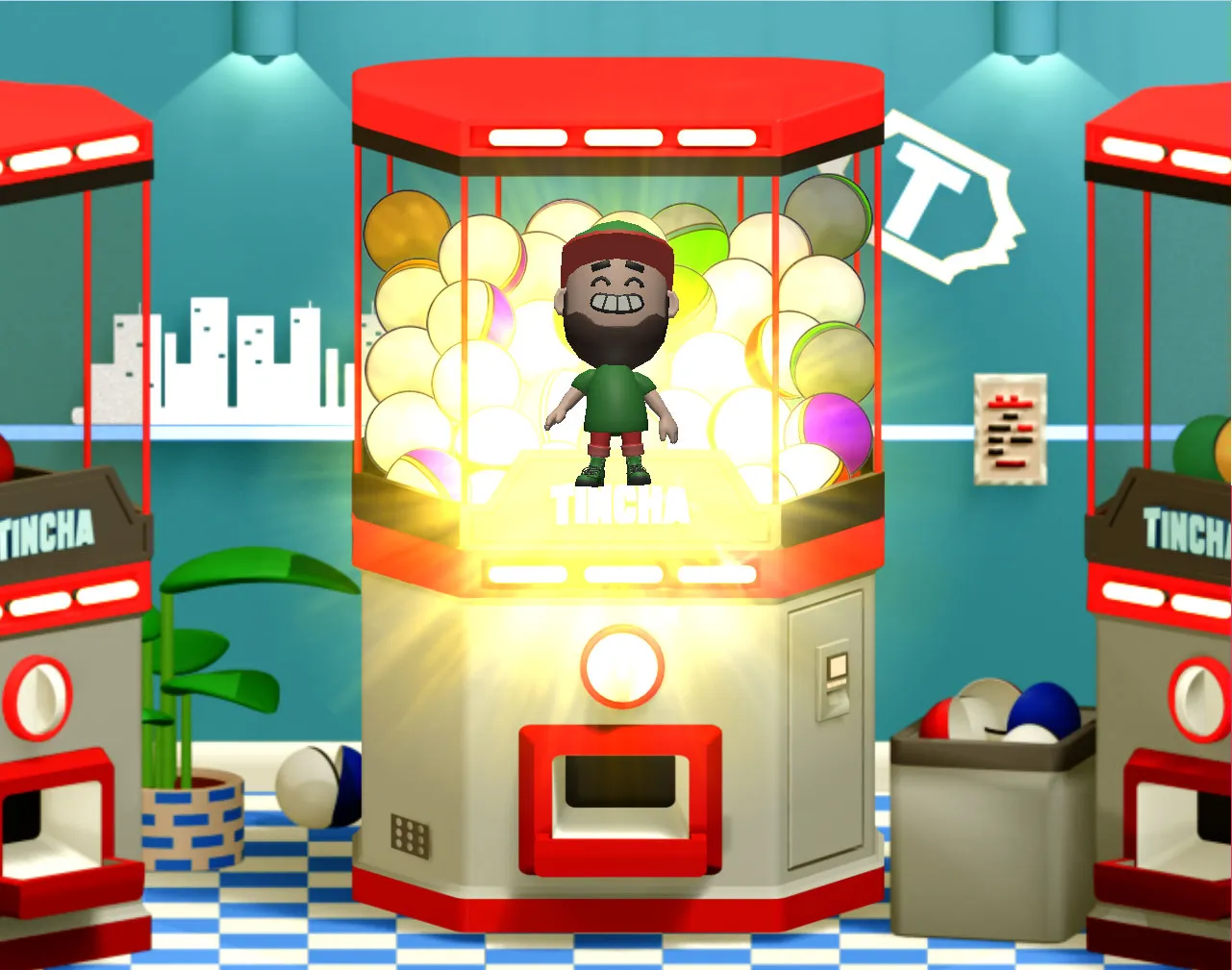
If you love claw machines and gachapon-style collecting but don't want to spend real money, Tincha.se is the perfect destination to continue your journey. This free-to-play online gachapon game captures all the excitement of prize collection and optimization, without any coins or credit cards needed. It's designed for people who enjoy the thrill of collecting and strategizing - very much like the planning and skill you put into claw machine wins - but in a creative web game format.
What is Tincha.se? Imagine the surprise of a capsule toy machine (gachapon) combined with the strategic depth of a video game. Tincha gives you that experience: you can earn and collect a variety of cool items, level them up, combine them, and show off your collection, all for free. It's a game that rewards thoughtful play - much like analyzing claw machine setups and mastering them, in Tincha you'll be optimizing your moves and trades to build the best collection possible. The developers have added layers of creativity and strategy, so it's not just "click and luck" - it's about making smart choices (just as a claw machine optimizer would appreciate!). If you're curious about the fascinating history behind these capsule toy machines, check out our article on gachapon machines and their influence on video games.
Why try Tincha? If you're the type of person who reads guides on how to beat claw games, you clearly enjoy a bit of strategy with your fun. Tincha.se offers exactly that blend of excitement and strategy in the realm of gachapon. You get the rush of the random prize draw - that dopamine hit of opening a new capsule - but also the ability to influence outcomes through skillful play over time. Best of all, you can enjoy this without spending a dime. No more swiping your card or feeding bills into a machine for "just one more go" - Tincha lets you play as much as you want, and your currency in the game is earned by playing the game, not by opening your wallet.
And here's something really exciting for claw machine fans: Claw machines are coming soon to Tincha! The team is actively working on incorporating virtual claw machine gameplay into the platform. That means you'll be able to test your claw skills in-game, using the same principles you've learned (positioning, timing, etc.), to win virtual prizes for your collection. It's the best of both worlds - the authenticity of claw machine mechanics and the imaginative, strategy-rich environment of Tincha. You'll get to enjoy the feel of an arcade claw machine - the anticipation as the claw drops - but within a free web game where every win adds to your online collection rather than cluttering your shelf with more plushies!
So, if a free-to-play collecting game that blends gachapon surprises with strategic depth - and soon, virtual claw machines - sounds appealing, Tincha.se invites you to explore. It’s easy to get started, and the game is regularly updated with new features. It offers a welcoming environment for anyone who enjoys the thrill of collecting and optimizing, providing all the fun of prize games without the real-money commitment.
Enjoy the game, and happy collecting! Remember: armed with the knowledge from this guide, you're ready to conquer both physical claw machines and digital gachapon games like a pro. Good luck, have fun, and may your prizes always drop right into the chute!
🔗 Keep Exploring
👉 The Ultimate Guide to Online Claw Machines and Gachapon Platforms
👉 Discover 10 Cozy Indie City-Building Games You'll Love
👉 Explore the History of Gachapon and Their Influence on Games
